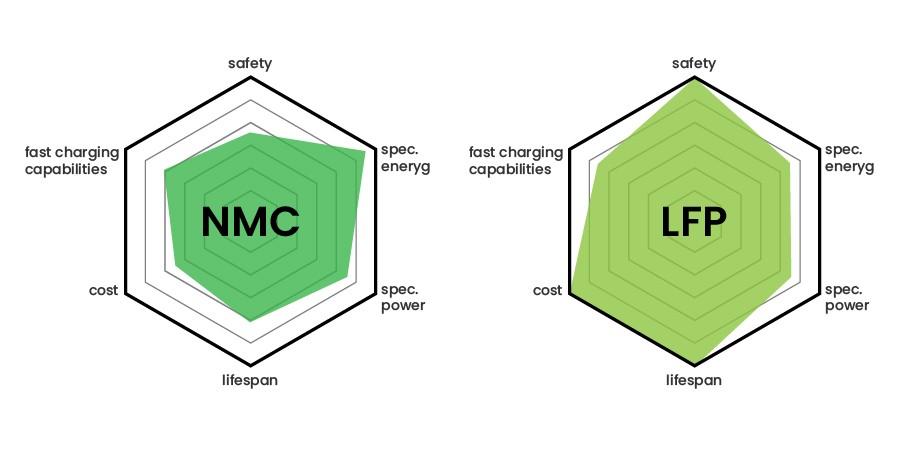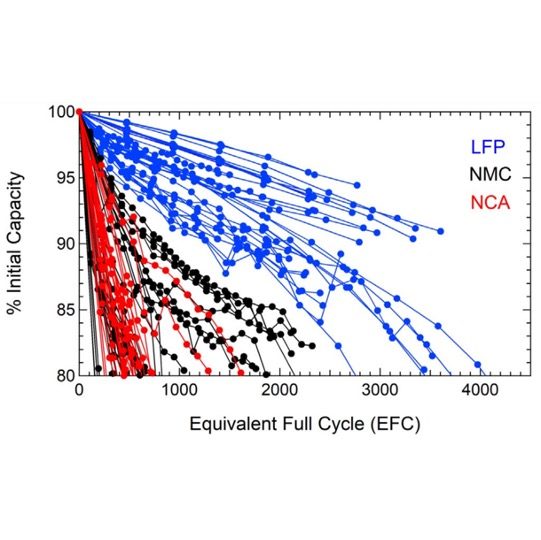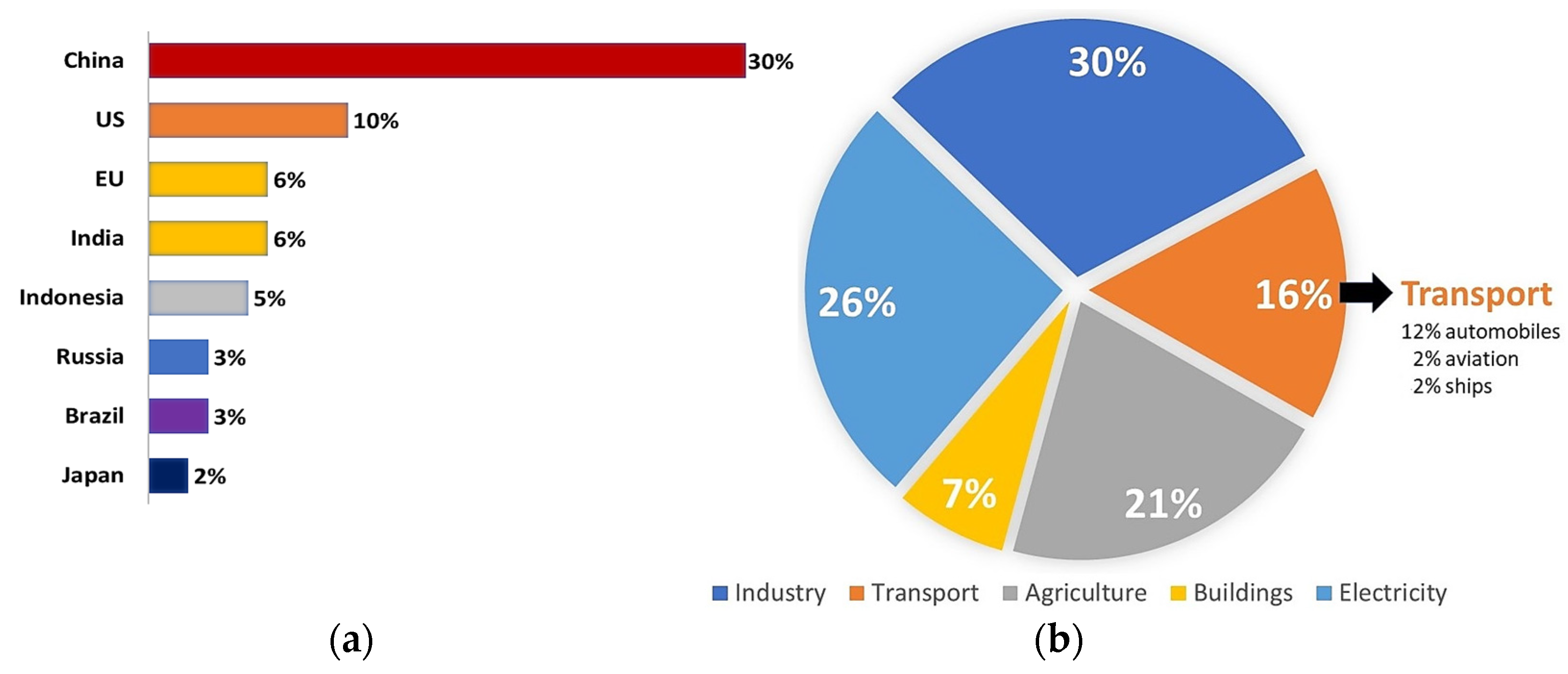Tesla LFP Battery vs Lithium-Ion. Tesla’s LFP batteries offer robust longevity and safety at a lower cost than lithium-ion batteries. Lithium-ion versions, however, provide higher energy density and longer range.
Tesla continues to innovate in the electric vehicle (EV) market with its battery technology, specifically iron phosphate lithium (LFP) and traditional lithium-ion batteries. The LFP batteries are gaining favour in the standard range models due to their cost-effectiveness and thermal stability, reducing the risks associated with overheating.
Despite their advantages, these batteries are bulkier and offer less energy density than their lithium-ion counterparts, translating to a shorter driving distance between charges. Tesla’s lithium-ion batteries, renowned for having a dense energy content, enable longer ranges and faster acceleration.
Choosing between LFP and lithium-ion batteries involves a trade-off between affordability, safety, weight, and driving range, which is crucial for EV consumers’ decision-making. As sustainability and cost savings become increasingly important, Tesla’s battery options reflect a strategic response to diverse market demands.
Introduction To Electric Vehicle Battery Technologies
The battery is the engine of an electric vehicle (EV). EV batteries store and provide the energy needed to drive the motors. As EVs grow in popularity, understanding the different battery technologies becomes crucial. Tesla, a pioneer in the EV industry, continues to push the boundaries of battery technology.
Overview Of Ev Batteries: Understanding The Core
Every EV’s core is a battery pack made of numerous cells. These cells store electrical energy. The battery pack powers the car’s electric motors, electronics, and other systems. Battery type defines the car’s range, performance, and charging speed.
- Capacity: Determines how far the EV can travel
- Energy density: Affects the size and weight of the battery
- Life cycle: Indicates how many charges and discharges a battery can handle
A Glimpse Into Tesla’s Battery Innovation Journey
Tesla has been a frontrunner in battery innovation. The company’s quest to improve EV batteries is unending. Tesla has made significant strides from the Roadster’s early batteries to today’s sophisticated packs. They focus on efficiency, sustainability, and cost.
| Year | Tesla Model | Battery Type |
|---|---|---|
| 2008 | Roadster | Lithium-ion |
| 2012 | Model S | Improved Lithium-ion |
| 2020 | Model 3 | LFP (in some variants) |
Lfp Vs Lithium-ion: The Basics
Tesla uses two main types of batteries: Lithium Iron Phosphate (LFP) and Lithium-ion. LFP batteries use iron, a common material, making them relatively cheaper and more stable. Lithium-ion is known for having a high energy density, batteries can be more expensive and require careful handling.
LFP Batteries:
– Eco-friendly: Less toxic materials
– Stable: Lower risk of overheating
– Long life: Sustain more charge cycles
Lithium-ion Batteries:
– High energy density: More power
Lighter weight: Better efficiency
– Fast charging: Less downtime

Credit: www.linkedin.com
Dissecting The Tesla Lfp Battery
Imagine a battery that is tough, long-lasting, and good for our planet. Tesla is making this objective with their LFP batteries. Let’s take a peek inside these powerhouses.
Composition And Working Principle Of Lfp Batteries
Tesla’s LFP batteries use iron, phosphate, and lithium. These materials work together to make electricity. It’s like a dance, where lithium moves to create power and moves back when charging.
- Lithium – the energy mover
- Iron – tough and steady
- Phosphate – holds the energy pack together
Advantages Of Tesla’s Lfp Batteries
Imagine charging your car without worry. That’s what LFP batteries offer. They are very safe and can last for many years. Plus, they are kinder to the Earth because they use less rare stuff.
- Better safety – less fire risk
- Long life – keeps going for longer
- Eco-friendly – uses common materials
Limitations And Challenges With Lfp Technology
Even superheroes have weaknesses. LFP batteries are heavier and hold less energy than some others. In cold places, they might work better. Tesla works hard to make them even better.
- Heavier – more weight to carry
- Less energy – can’t go as far
- Cold sensitive – don’t like the chill
Tesla’s Strategy: Why The Shift To Lfp Batteries?
Tesla is always thinking ahead. They see that using LFP batteries can bring the cost down and make them without needing stuff that’s hard to find. So, they are switching some cars to use LFP to make a cleaner and happier planet for all.
- Cost-effective – save money
- Less rare materials – more straightforward to get
- Greener future – good for our Earth
Comparing Lithium-ion Batteries
Electric vehicles (EVs) are changing the way we think about transport. Under the hood, the battery plays a crucial role. Lithium-ion batteries have set the standard among the various battery types in the EV industry. They come in varying chemistries and structures, each with advantages and challenges. Let’s shed some light on the traditional lithium-ion approach, its benefits, and the concerns it raises.
The Traditional Lithium-ion Approach In Evs
EVs have primarily relied on lithium-ion batteries. This technology stands out for its high energy density and efficiency. It enables cars to travel farther on a single charge, a feature critical to EV success. These batteries are composed of lithium, cobalt, manganese, and nickel, among other materials.
Benefits Of Lithium-ion Batteries For Electric Vehicles
- More extended range: They can store much energy, extending the vehicle’s range.
- Lightweight: Their low weight contributes to better vehicle efficiency.
- Longevity: These batteries often come with lengthy warranties, signifying their durability.
The Drawbacks: Exploring The Concerns With Lithium-ion
Despite the advantages, there are essential concerns. First among them is the environmental impact. The extraction of lithium, cobalt, and other metals poses ecological challenges. Then there’s the thermal runaway risk, where batteries can overheat and pose safety hazards.
| Concern | Description |
|---|---|
| Sustainability Issues | Mining of raw materials often leads to ecological harm. |
| Safety Risks | Potential for fires due to thermal runaway, especially after damage. |

Credit: www.onecharge.biz
In-depth Comparison: Lfp Vs Lithium-ion
Delving into the realm of electric vehicles (EVs) introduces us to the heart of these innovations: their batteries. The Tesla LFP and Lithium-Ion batteries are two powerhouses fueling the EV revolution.
This section unpacks the distinctions between LFP (Lithium Iron Phosphate) and traditional Lithium-Ion batteries, comparing their energy density, lifespan, cost-effectiveness, safety, and environmental impact.
Energy Density Showdown: Storage Capacity Contrasted
Energy density measures how much power a battery can hold. Lithium-ion batteries make Longer driving ranges possible because of their high energy density. In contrast, LFP batteries may have lower energy storage capacities, creating a dilemma for distance-oriented drivers.
Lifespan And Durability: Which Battery Lasts Longer?
- Lifespan is critical for budget-friendly EV operation.
- Lithium-ion batteries provide significant power but face degradation over time.
- Conversely, LFP batteries shine with extended lifespans and consistent performance, reducing replacements.
Cost Effectiveness: Analyzing The Economic Impact
The price tag of a battery is a significant consideration for buyers. Lithium-ion technologies come with a premium cost due to their energy density. LFP batteries present an economical option, lowering the entry barrier for EV consumers.
Safety First: Assessing Risks And Stabilities
Safety is paramount. Lithium-ion batteries carry a higher risk of thermal events. LFP batteries are noted for being more stable under stress, providing peace of mind regarding safety hazards.
Environmental Considerations: Sustainability Of Battery Materials
Environmental impact is a hot topic in the EV industry. The manufacturing process of Lithium-Ion batteries calls for rare minerals, often associated with ethical and ecological concerns. LFP batteries, on the other hand, use more abundant resources, leaning towards a greener blueprint.
Tesla’s Batteries In The Real World
As electric vehicles evolve, Tesla continues to lead innovation in battery technology. Comparing Tesla’s LFP (Lithium Iron Phosphate) batteries to traditional lithium-ion, consumers and industry experts are keen to understand real-world implications. Let’s explore how these batteries stack up regarding performance, market response, and future advancements.
Consumer Experiences: Performance And Reliability
Tesla drivers regularly share their experiences online. They discuss battery life and how their cars handle daily use. Tesla’s LFP batteries are known for their safety and longevity. They perform well in various climates. Users report consistent mileage without significant degradation over time. This aligns with Tesla’s aim for more reliable, low-maintenance electric cars.
- Consistent charging cycles
- Excellent cold-weather performance
- Rare occurrences of battery-related issues
Global Market Response To Tesla’s Battery Choices
Customers worldwide react to Tesla’s battery decisions. Many favours the company’s switch to LFP for their standard-range models. Markets prize LFP’s eco-friendliness, safety, and cost. It impacts Tesla’s popularity and sales. Analysts predict this shift could influence other car manufacturers.
| Region | Response |
|---|---|
| North America | Positive feedback on performance |
| Europe | Appreciation for environmental benefits |
| Asia | Support for cost-effectiveness |
Future Prospects: Innovations And Potential Upgrades
With Tesla’s ongoing research, future batteries promise more improvements. The company targets quicker charging times and increased energy density. Investment in new materials and technologies could revolutionize electric vehicle batteries.
- Better energy retention
- Reduced charging periods
- Sustainable material use Enhancements in Tesla’s battery technology could set new standards. They could push the entire car industry forward .
Conclusion: The Future Of Ev Batteries
The electric vehicle (EV) industry is rapidly evolving. Battery technology stands at its core. Both Lithium-Iron Phosphate (LFP) and Lithium-Ion batteries power today’s EVs.
Tesla, a significant participant in this market, continues to innovate, pushing these technologies to new heights. This section compares LFP and Lithium-Ion batteries and discusses Tesla’s role in shaping the future of EV batteries.
Summarizing The Duel: Lfp Vs Lithium-ion
LFP and Lithium-Ion batteries both have unique advantages:
- LFP batteries are known for their longer lifespans and safety.
- Lithium-ion batteries, on the other hand, boast higher energy density.
Tesla integrates both to cater to different market needs. LFPs are in entry-level models, ideal for shorter commutes. Lithium-Ion batteries power long-range vehicles demanding robust performance.
Predictive Insights: Tesla’s Battery Directions
Tesla’s battery strategy reflects a blend of performance, cost-efficiency, and sustainability. With their Gigafactories, Tesla is scaling up LFP production for standard-range cars. In contrast, they continue to enhance Lithium-Ion technology for top-tier models. Forward-looking, Tesla aims to reduce reliance on scarce metals like cobalt, thus pointing towards the broader adoption of LFP.
Final Thoughts: Steering Towards A Greener Path
Tesla’s commitment to innovation influences the entire EV industry. By advancing both LFP and Lithium-Ion technologies, they underscore their pledge to a sustainable future. Considerations extend beyond sheer performance. They encompass environmental impact and resource availability. Consequently, Tesla’s influence pushes the industry towards a greener, more sustainable trajectory.

Credit: www.mdpi.com
Tesla lfp battery vs lithium ion model 3
The Tesla Model 3 is available with two types of batteries: lithium-ion (Li-ion) and iron phosphate lithium (LFP). Here’s a brief comparison between the two:
- Chemistry:
- Lithium-ion (Li-ion): Traditional lithium-ion batteries use a combination of nickel, cobalt, and manganese in the cathode.
- Lithium Iron Phosphate (LFP): Iron phosphate is the cathode ingredient in LFP batteries, eliminating the need for cobalt.
- Energy Density:
- Li-ion: Generally has a higher energy density than LFP, meaning it can store more energy per unit of volume.
- LFP: Lower energy density, but improving over time.
- Range:
- Li-ion: Models with lithium-ion batteries often have a more extended range on a single charge due to higher energy density.
- LFP may have a slightly lower range, but technological advancements are narrowing the gap.
- Weight:
- Li-ion: Typically lighter due to higher energy density.
- LFP: Heavier, but the difference might be insignificant in practical terms.
- Charging Characteristics:
- Li-ion: Generally faster-charging capabilities, especially at higher charging stations.
- LFP: We may have slightly slower charging times, but advancements are being made to improve this.
- Cost:
- Li-ion: Historically, lithium-ion batteries have been more expensive.
- LFP: Generally considered more cost-effective due to the absence of expensive cobalt and other materials.
- Longevity:
- Li-ion: Traditionally, concerns about degradation over time, mainly if not correctly managed.
- LFP: Often considered more durable and longer-lasting, with better cycle life.
- Environmental Impact:
- Li-ion: Cobalt mining, a key component in some lithium-ion batteries, has environmental and ethical concerns.
- LFP: Considered more environmentally friendly due to the absence of cobalt and lower risk of thermal runaway.
In summary, both lithium-ion and LFP batteries have their advantages and trade-offs. Their choice depends on cost, range requirements, charging infrastructure, and environmental considerations.
Tesla has been actively working on improving battery technology, and future models may incorporate advancements that further bridge the gap between these two battery types.
Frequently Asked Questions On Tesla Lfp Battery Vs Lithium-ion
Is Lfp Battery Better Than Lithium Ion?
LFP (lithium ferrophosphate) batteries trump traditional lithium-ion in safety and lifespan but lag in energy density and power. They serve well in applications valuing stability over capacity.
What Are The Disadvantages Of Lfp Batteries?
LFP batteries (Lithium Ferro Phosphate) have lower energy density than other lithium-ion types and a lower nominal voltage. They also offer less specific energy, which means bulkier battery size for the same power, potentially posing design constraints in portable applications.
Will Tesla Lfp Battery Last Longer?
Tesla’s LFP (Lithium Iron Phosphate) batteries typically offer longer lifespans due to their stable chemistry and lower degradation rates during charging cycles.
Which Is Better Li Ion Or Lifepo4?
LiFePO4 batteries are generally safer and have a longer life span than Li-ion ones. However, Li-ion batteries offer higher energy density and are more compact.
Conclusion
Deciding between Tesla’s LFP batteries and traditional lithium-ion is crucial for optimizing your electric vehicle experience. Each option brings unique benefits, from LFP’s longevity and safety to lithium-ion’s energy density. Whichever you choose, aligning it with your driving needs and sustainability goals is critical.
Embrace the future of clean transportation with knowledge and confidence.

I am a technology Specialized . I have experience in Technology, and all types of electronic devices like Battery . So I work on solving these issues and give various tips on these issues

